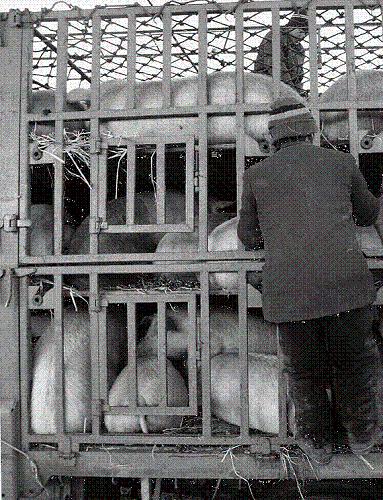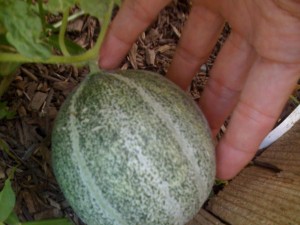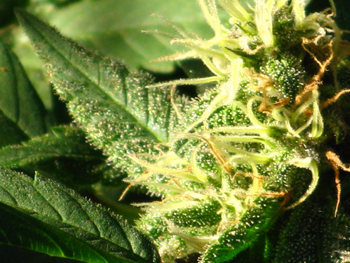
F. William Engdahl, Global Research – What are the symptoms of this purported Swine Flu? That’s not at all clear according to virologists and public health experts. They say Swine Flu symptoms are relatively general and nonspecific. ‘So many different things can cause these symptoms. it is a dilemma,’ says one doctor interviewed by CNN. ‘There is not a perfect test right now to let a doctor know that a person has the Swine Flu.’ It has been noted that most individuals with Swine Flu had an early on set of fever. Also it was common to see dizziness, body aches and vomiting in addition to the common sneezing, headache and other cold symptoms. These are symptoms so general as to say nothing.
The US Government’s Center for Disease Control in Atlanta states on its official website, ‘Swine Influenza (swine flu) is a respiratory disease of pigs caused by type A influenza viruses that causes regular outbreaks in pigs. People do not normally get swine flu, but human infections can and do happen. Swine flu viruses have been reported to spread from person-to-person, but in the past, this transmission was limited and not sustained beyond three people.’ Nonetheless they add, ‘CDC has determined that this swine influenza A (H1N1) virus is contagious and is spreading from human to human. However, at this time, it is not known how easily the virus spreads between people.
How many media that have grabbed on the headline ‘suspected case of Swine Flu’ in recent days bother to double check with the local health authorities to ask some basic questions? For example, the number of confirmed cases of H1N1 and their location? The number of deaths confirmed to have resulted from H1N1? Dates of both? Number of suspected cases and of suspected deaths related to the Swine Flu disease?
According to Biosurveillance, itself part of Veratect, a US Pentagon and Government-linked epidemic reporting center, on April 6, 2009 local health officials declared a health alert due to a respiratory disease outbreak in La Gloria, Perote Municipality, Veracruz State, Mexico.
They reported, ‘Sources characterized the event as a ‘strange’ outbreak of acute respiratory infection, which led to bronchial pneumonia in some pediatric cases. According to a local resident, symptoms included fever, severe cough, and large amounts of phlegm. Health officials recorded 400 cases that sought medical treatment in the last week in La Gloria, which has a population of 3,000; officials indicated that 60% of the town’s population (approximately 1,800 cases) has been affected. No precise timeframe was provided, but sources reported that a local official had been seeking health assistance for the town since February.’ What they later say is ‘strange’ is not the form of the illness but the time of year as most flu cases occur in Mexico in the period October to February. . .
Then, most revealingly, the aspect of the story which has been largely ignored by major media, they reported, ‘Residents believed the outbreak had been caused by contamination from pig breeding farms located in the area. They believed that the farms, operated by Granjas Carroll, polluted the atmosphere and local water bodies, which in turn led to the disease outbreak. According to residents, the company denied responsibility for the outbreak and attributed the cases to “flu.” However, a municipal health official stated that preliminary investigations indicated that the disease vector was a type of fly that reproduces in pig waste and that the outbreak was linked to the pig farms.’
Since the dawn of American ‘agribusiness,’ a project initiated with funding by the Rockefeller Foundation in the 1950’s to turn farming into a pure profit maximization business, US pig or hog production has been transformed into a highly efficient, mass production industrialized enterprise from birth to slaughter. Pigs are caged in what are called factory farms, industrial concentrations which are run with the efficiency of a Dachau or Bergen-Belsen concentration camp. They are all conceived by artificial insemination and once born, are regularly injected with antibiotics, not because of illnesses which abound in the hyper-crowded growing pens, but in order to make them grow and add weight faster. Turn around time to slaughter is a profit factor of highest priority. The entire operation is vertically integrated from conception to slaughter to transport distribution to supermarket.
Granjas Carroll de Mexico (happens to be such a factory farm concentration facility for hogs. In 2008 they produced almost one million factory hogs, 950,000 according to their own statistics. GCM is a joint venture operation owned 50% by the world’s largest pig producing industrial company, Smithfield Foods of Virginia. The pigs are grown in a tiny rural area of Mexico, a member of the North American Free Trade Agreement, and primarily trucked across the border to supermarkets in the USA, under the Smithfields’ family of labels. Most American consumers have no idea where the meat was raised.
Now the story becomes interesting.
The Times of London interviewed the mother of 4-year-old Edgar Hernandez of La Gloria in Veracruz, the location of the giant Smithfield Foods hog production facility. Their local reporter notes, ‘Edgar Hernández plays among the dogs and goats that roam through the streets, seemingly unaware that the swine flu he contracted a few weeks ago – the first known case – has almost brought his country to a standstill and put the rest of the world on alert. ‘I feel great,’ the five-year-old boy said. ‘But I had a headache and a sore throat and a fever for a while. I had to lay down in bed.”
The reporters add, ‘It was confirmed on Monday (April 27 2009-w.e.) that Edgar was the first known sufferer of swine flu, a revelation that has put La Gloria and its surrounding factory pig farms and ‘manure lagoons’ at the centre of a global race to find how this new and deadly strain of swine flu emerged.’
That’s quite interesting. They speak of ‘La Gloria and its surrounding factory pig farms and ‘manure lagoons.” Presumably the manure lagoons around the LaGloria factory pig farm of Smithfield Foods are the waste dumping place for the feces and urine waste from at least 950,000 pigs a year that pass through the facility. The Smithfield’s Mexico joint venture, Norson, states that alone they slaughter 2,300 pigs daily. That’s a lot. It gives an idea of the volumes of pig waste involved in the concentration facility at La Gloria.
Significantly, according to the Times reporters, ‘residents of La Gloria have been complaining since March that the odor from Granjas Carroll’s pig waste was causing severe respiratory infections. They held a demonstration this month at which they carried signs of pigs crossed with an X and marked with the word peligro (danger).’ There have been calls to exhume the bodies of the children who died of pneumonia so that they could be tested. The state legislature of Veracruz has demanded that Smithfield’s Granjas Carroll release documents about its waste-handling practices. Smithfield Foods reportedly declined to comment on the request, saying that it would ‘not respond to rumours.’
 The local food movement is gaining enough popularity to capture the interest of big business. Some of the biggest corporate food companies are looking for ways to greenwash their products. Although it sure beats sourcing their crops from overseas and is a step in the right direction, the following marketing claims can be misleading since the actual processing of these often factory-farm grown products may be anything but local:
The local food movement is gaining enough popularity to capture the interest of big business. Some of the biggest corporate food companies are looking for ways to greenwash their products. Although it sure beats sourcing their crops from overseas and is a step in the right direction, the following marketing claims can be misleading since the actual processing of these often factory-farm grown products may be anything but local:

 without paying any premium, organic soy foods that truly meet their expectations.”
without paying any premium, organic soy foods that truly meet their expectations.” City Limits –
City Limits – 
 Responding to an April suit by the Center for Biological Diversity and allies, last week the National Marine Fisheries Service ordered a six-month emergency closure of the Gulf of Mexico’s bottom longline fishery to halt sea-turtle slaughter. When sea turtles get tangled among the hundreds (or even thousands) of baited hooks used by longline fishing vessels, they sustain life-threatening injuries. If they don’t drown while caught in the hooks, turtles are often unable to snap out of the extreme psychological stress of capture and die immediately after release. According to the Service’s data, fishery vessels in the Gulf caught nearly 1,000 sea turtles — including about 800 federally protected loggerheads — between July 2006 and December 2008, nearly eight times the number the agency itself deemed permissible. Now the fishery will be closed for 180 days, starting on May 16, to allow for a new evaluation of the fishery’s impacts and ensure it’s not likely to jeopardize the existence of sea turtle species.
Responding to an April suit by the Center for Biological Diversity and allies, last week the National Marine Fisheries Service ordered a six-month emergency closure of the Gulf of Mexico’s bottom longline fishery to halt sea-turtle slaughter. When sea turtles get tangled among the hundreds (or even thousands) of baited hooks used by longline fishing vessels, they sustain life-threatening injuries. If they don’t drown while caught in the hooks, turtles are often unable to snap out of the extreme psychological stress of capture and die immediately after release. According to the Service’s data, fishery vessels in the Gulf caught nearly 1,000 sea turtles — including about 800 federally protected loggerheads — between July 2006 and December 2008, nearly eight times the number the agency itself deemed permissible. Now the fishery will be closed for 180 days, starting on May 16, to allow for a new evaluation of the fishery’s impacts and ensure it’s not likely to jeopardize the existence of sea turtle species.